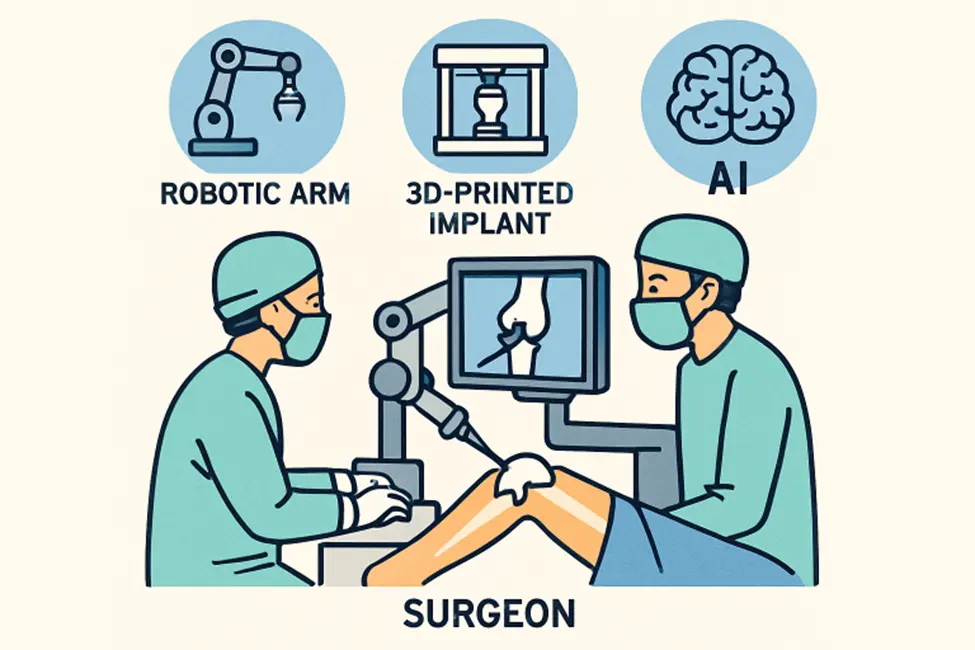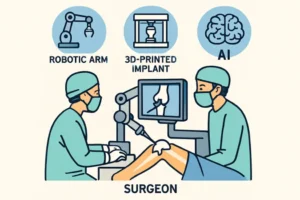Introduction
Orthopedic surgery, particularly joint replacement procedures, has experienced a seismic shift in recent years, driven by advances in surgical technology and methods. For patients seeking relief from joint pain or degenerative diseases, these changes promise more effective and less disruptive solutions. Anyone considering advanced orthopedic surgery options in Tulsa or elsewhere should be aware of the latest developments that are making orthopedic care safer and more precise.
These pioneering techniques not only refine the surgeon’s approach but also greatly influence key patient outcomes—ranging from better pain control and shorter hospital stays to enhanced long-term mobility. Tailored solutions and ongoing data monitoring mean patients can expect surgical experiences that fit their unique anatomies and lifestyles.
Minimally Invasive Techniques
Minimally invasive surgery has rapidly gained favor among orthopedic specialists for its ability to deliver superior results with lower risk. Instead of the long incisions and extensive tissue disruption associated with traditional procedures, minimally invasive approaches use incisions that are often less than five inches long. This reduces trauma to surrounding muscles and soft tissue, resulting in quicker recovery times, less post-operative pain, and reduced blood loss.
Patients—especially older adults or those with chronic health issues—benefit greatly from these advances. They typically experience a faster return to daily activities, lower risk of infection, and improved surgical outcomes overall. The emphasis on reduced tissue trauma is helping to redefine what’s possible in orthopedic surgery worldwide.
Robotic-Assisted Surgery
Robotic assistance has become a game-changer, providing surgeons with tools for unparalleled accuracy. Before surgery, robotic systems use high-resolution scans to generate a three-dimensional model of the patient’s joint. For more detailed information on robotic-assisted joint replacement, the American Academy of Orthopaedic Surgeons provides an extensive guide. During the procedure, robotic arms guide the surgeon’s movements, ensuring that the implant is placed with the utmost precision, sometimes down to a fraction of a millimeter.
This leads to better alignment and functionality of artificial joints, which can ultimately mean longer implant lifespans and fewer post-surgery complications. Robotic procedures may also be associated with less pain and a reduced need for revision surgeries, positioning this technology at the forefront of orthopedic innovation. For additional information on how robotic-assisted surgery is changing the landscape, primary sources like Healthline offer comprehensive reviews and clinical outcomes. Additionally, these systems enable highly personalized treatments tailored to each patient’s anatomy, helping individuals return to daily activities more quickly than with traditional surgical methods.
3D Printing for Custom Implants
3D printing has opened the door to fully customizable implants, addressing anatomical nuances that traditional “off-the-shelf” prosthetics may not. Surgeons design implants tailored to each patient’s joint size, structure, and biomechanical needs, resulting in better fits and improved joint function. Materials used in 3D printing range from durable metals to biocompatible polymers, each with properties engineered to enhance integration and performance.
Custom implants not only enhance comfort but may also lead to better mobility and greater long-term satisfaction for patients. This approach is especially valuable for those with complex anatomies or rare conditions, broadening access to life-changing surgery for a wider patient base.
Smart Implants with Sensor Technology
The fusion of implants and smart technology is quietly reshaping follow-up care and recovery. Today’s sensor-enabled implants collect data—such as pressure distribution, gait analysis, and joint movement—allowing both patients and physicians to monitor progress in real time. These insights help guide rehabilitation programs and detect issues before they evolve into complications.
Emerging smart implants reduce the need for frequent in-person visits and enable early intervention if problems arise.
Artificial Intelligence in Surgical Planning
Artificial intelligence is increasingly woven into the preoperative and diagnostic work for orthopedic surgeons. AI-driven platforms sift through imaging data—MRI, CT scans, and even X-rays—highlighting subtle patterns and informing optimal surgical plans. This technology can identify risks, suggest personalized implant positioning, and streamline pre-surgical preparation, making each procedure safer and more effective. AI tools are also being leveraged for post-surgical monitoring and predictive analytics, ensuring that care continues long after the operating room.
Biological Treatments for Osteoarthritis
For individuals struggling with osteoarthritis and other degenerative conditions, biological therapies offer non-surgical or surgery-delaying solutions. Platelet-rich plasma (PRP) injections and stem cell therapy use the patient’s natural biological materials to promote healing, reduce inflammation, and aid tissue regeneration. While still being refined and actively researched, these approaches are gaining momentum as alternatives to full joint replacements, promising hope for those seeking less invasive solutions.
Conclusion
The rapid evolution of orthopedic surgery provides patients today with a wealth of new options for joint health and mobility. From innovative surgical tools to AI-driven solutions, modern techniques are improving the quality of life for people facing joint replacement. As these technologies continue to advance, patients and providers alike can look forward to surgeries that are safer, more precise, and tailored for optimal recovery.
ALSO READ-Why Tech-Savvy Designers Are Turning to Virtual Tools for Better Results








